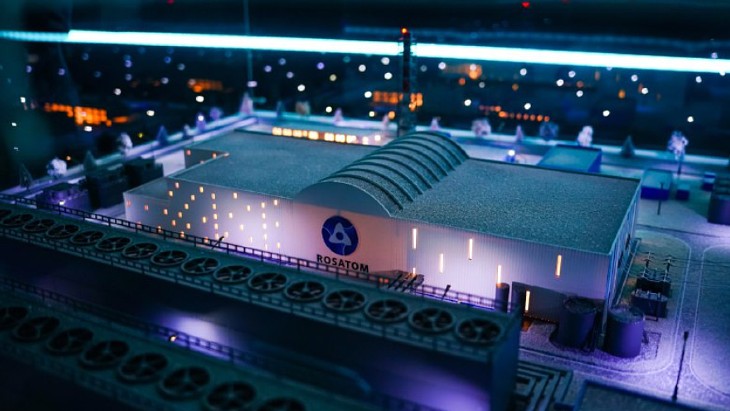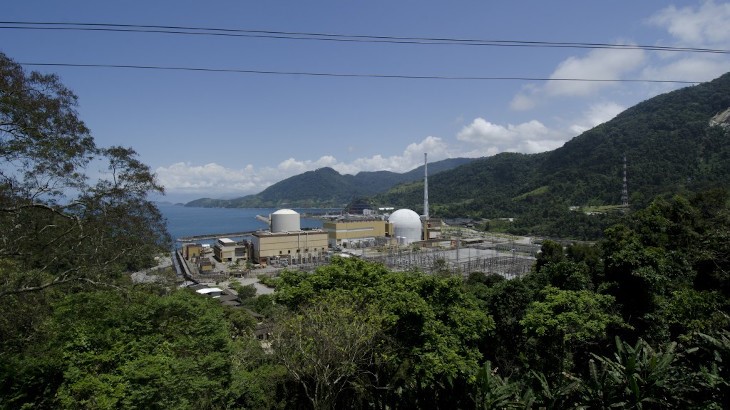New Study Questions LNG as a "Bridge Fuel" in Decarbonization
- President Joe Biden announced a pause on new LNG export licenses to assess their impact on domestic energy security, consumer costs, and the environment.
- Recent studies and scientific letters argue that LNG may not be as clean as previously thought, potentially being worse for the climate than coal when considering the full lifecycle of its production and methane emissions.
- The pause on LNG exports is contentious, with some arguing it will hinder global energy demands and environmental progress, while others see it as a necessary step towards cleaner energy alternatives.
For years, the petroleum industry has been trying to push liquefied natural gas as a clean energy source, or at least a cleaner energy source than other fossil fuels, touting its role as a stepping stone or ‘bridge fuel’ between higher-emissions fuels and clean energy in the decarbonization transition. But recent research shows that LNG may not always be cleaner than coal, the dirtiest fossil fuel.
The debate over whether LNG is in reality a cleaner alternative to other fossil fuels has been reengaged in recent months as the Biden administration has announced that it will pause approvals of new licenses to export liquefied natural gas. Last Friday, President Joe Biden announced that during this freeze the United States Department of Energy will review and assess whether the nation’s considerable LNG exports are “undermining domestic energy security, raising consumer costs and damaging the environment.”
This pause will have widespread implications for global energy markets, as the United States was the single biggest exporter of liquefied natural gas in the world in 2023. According to LSEG data, full year exports from the U.S. rose 14.7% to 88.9 million metric tons (MT), but from 77.5 million metric tons in 2022.
As the Biden administration's decision to pause new approvals makes waves around global energy markets, it’s also caused a major resurgence of the natural gas debate in scientific circles. We now know that natural gas is much more harmful for the environment than initially thought, but there is widespread disagreement about to what extent, and whether pausing exports is actually the right move for the environment.
In December 2023, 170 climate scientists signed onto a letter petitioning President Joe Biden to reject all plans to build more LNG export terminals going forward, and especially along the Gulf of Mexico. Their argument was based on the finding that, in stark contrast to the dominant energy transition narrative, liquefied gas is actually “at least 24 percent worse for the climate than coal.” This figure comes from a forthcoming Cornell University study (which has not yet been peer reviewed).
The issue is not really the consumption of the natural gas itself, but emissions associated with the life cycle of liquefied natural gas production. The Cornell University figure comes from figuring in the carbon dioxide emissions that result from the liquefying process, which requires chilling natural gas to extremely cold temperatures, an energy-intensive ordeal.
Another major issue is the methane that is released during the extraction of natural gas. Methane is an extremely potent greenhouse gas. While it breaks up much more quickly in the atmosphere than carbon dioxide, it is 80 times more potent at warming than CO2 over a 20-year period. And peer–reviewed studies (like this one, this one, and this one) are increasingly indicating that natural gas produces much, much more methane over its life cycle than previously thought.
But other experts contend that these figures, while peer-reviewed, are politically motivated and the figures are inflated or skewed to tell a certain narrative that’s not necessarily consistent with reality. “It's just extremely frustrating to even deal with claims like this, because we talk about settled science,” says Dan Byers, vice president of policy at the U.S. Chamber of Commerce, where he works on environmental issues in a recent Scientific American report. “The notion that, you know, LNG and natural gas reduce emissions by displacing coal is completely well established. So it feels like we’ve got like a flat earth situation going on with these claims.”
A recent op-ed in the Wall Street Journal goes as far as to contend that the Biden administration’s new LNG export pause will actually harm the environment more than it helps. In the op-ed Chris Barnard, president of the American Conservation Coalition, argues that if the United States takes a step back from meeting global energy demands, other energy powers including Russia and China will only be too happy to fill those shoes. He argues that the result will be a more volatile geopolitical landscape as well as an increase of more carbon-intensive energy sources on the market.
As usual, the truth probably lies somewhere in the middle. But the one thing that’s certain is that regardless of whether coal or LNG is cleaner, clean energy buildout will always be the cleanest. Of course, LNG will continue to have a role in stabilizing, and yes, bridging a smooth energy transition. But the quicker we can move away from it, the better.
By Haley Zaremba for Oilprice.com
LNG Projects Poised for Bumper Season Despite Washington Freeze
- Energy Intelligence: interest in long-term LNG projects remains robust.
- Energy Intelligence: we expect the LNG momentum to continue under the next government regardless of who wins the November presidential elections due to Biden’s commitment to U.S. allies and Trump’s pursuit of higher fossil fuel production.
- WoodMackenzie: expect lower LNG prices in 2024.
Last week, U.S. President Joe Biden paused new licenses for LNG export projects still in the planning pipeline to give his administration time to reassess whether additional infrastructure is in the “public interest” in terms of the country’s energy security and climate goals.
The administration has highlighted lingering fears that shipping large volumes of U.S. gas overseas could erode America’s competitive advantage of cheap energy critical for energy-intensive industries such as steelmaking and petrochemicals and also seeks to address concerns by environmental activists who have argued that the entire LNG manufacturing, delivery and consumption cycle has a much higher carbon footprint than currently touted.
Not surprisingly, the decision has irked Republican lawmakers and rattled U.S. allies, especially in Europe due to the continent’s heavy reliance on American gas. With exports averaging 11.6 billion cubic feet per day (Bcf/d) during the first half of 2023, the U.S. is the world’s largest LNG exporter, ~70% of exports going to Europe and much of the balance going to Asia.
Currently, the U.S. has seven operating terminals capable of producing as much as 87 million tonnes of LNG a year--enough to satisfy the needs of Germany and France. Five more projects--already approved and under construction--will add another 63 million tonnes of capacity by 2028.
Scores of Big Oil companies including Exxon Mobil Corp. (NYSE:XOM), Chevron Corp. (NYSE:CVX), ConocoPhillips (NYSE:COP) and Energy Transfer LP (NYSE:ET) will potentially be impacted by the LNG freeze after they signed long-term supply deals with Venture Global LNG due to the company’s Calcasieu Pass 2 plant project. The project is part of a proposed 20 mtpa expansion of Venture Global’s existing Louisiana facility.
But here’s the good news for gas bulls: Whereas proposed LNG projects waiting for permits will probably now have to wait until 2025 due to the November elections, Energy Intelligence has reported that interest in long-term LNG projects remains robust. Earlier, energy Intel had provided estimates that around 69 million tons per year of LNG would reach Final Investment Decision (FID) in the current year, potentially the most significant year for FIDs since 2019, when more than 70 million tons/yr was sanctioned.
The energy agency says momentum remains strong following more than 40 million tons/yr in foundation supply agreements over the last two years, supporting projects that include Commonwealth, CP2 in North America, Delfin and Saguaro. The new approvals stand to increase capacity under construction by 40% and extend the next supply wave to 2028-29.
Obviously, the LNG freeze means it’s highly unlikely that Energy Intel’s forecast will be met in the current year. However, we expect the LNG momentum to continue under the next government regardless of who wins the November presidential elections due to Biden’s commitment to U.S. allies and Trump’s pursuit of higher fossil fuel production with the former president vowing to restart approvals on his “very first day back”.
“The decision will not affect our forecast for U.S. LNG exports out to 2028, but after that it could affect the trajectory and pace of the sector’s growth and have potential to tighten the market in the long run,” Giles Farrer, head of gas and LNG asset research at Wood Mackenzie, has told the Financial Times.
That said, the LNG hiatus could complicate matters if it carries on for too long. LNG buyers would be forced to look elsewhere while buyers would struggle to get financing to reach the critical final investment decisions without buyers if the government drags its feet.
Source: Energy Intel
Source: Y-Charts
Gas Prices Lag
Back in 2022, Europe’s key front-month Dutch Title Transfer Facility (TTF) rocketed to an all-time high of €340 per megawatt-hour while U.S. Henry Hub gas prices hit a 15-year high of $9.24 per MMBtu around the same time European gas peaked as the continent scrambled for new gas supplies after it ditched Russian gas. Unfortunately, booming production coupled with mild weather has badly tanked gas prices, with TFF prices falling to below €30 per megawatt-hour, the lowest level since August 4th, while Henry Hub gas has now sunk to $2.02/MMBtu.
Wall Street is predicting more pain in natural gas and LNG markets in the current year: in its report dubbed ‘Global Gas and LNG: 5 things to look out for in 2024’, Wood Mackenzie has forecast that mild Northern Hemisphere winter coupled with high storage levels in Europe will keep global gas prices subdued in 2024.
“[Wood Mackenzie] has been forecasting lower 2024 prices for much of last year, especially compared to forward curves, amid weak market fundamental expectations. Global LNG supply growth will remain limited at 14 million, but with Asian LNG demand still weak, competition for LNG is unlikely to heat up,” Massimo Di Odoardo, Vice President of Gas Research at Wood Mackenzie, has said.
By Alex Kimani for Oilprice.com
- Energy Intelligence: interest in long-term LNG projects remains robust.
- Energy Intelligence: we expect the LNG momentum to continue under the next government regardless of who wins the November presidential elections due to Biden’s commitment to U.S. allies and Trump’s pursuit of higher fossil fuel production.
- WoodMackenzie: expect lower LNG prices in 2024.
Last week, U.S. President Joe Biden paused new licenses for LNG export projects still in the planning pipeline to give his administration time to reassess whether additional infrastructure is in the “public interest” in terms of the country’s energy security and climate goals.
The administration has highlighted lingering fears that shipping large volumes of U.S. gas overseas could erode America’s competitive advantage of cheap energy critical for energy-intensive industries such as steelmaking and petrochemicals and also seeks to address concerns by environmental activists who have argued that the entire LNG manufacturing, delivery and consumption cycle has a much higher carbon footprint than currently touted.
Not surprisingly, the decision has irked Republican lawmakers and rattled U.S. allies, especially in Europe due to the continent’s heavy reliance on American gas. With exports averaging 11.6 billion cubic feet per day (Bcf/d) during the first half of 2023, the U.S. is the world’s largest LNG exporter, ~70% of exports going to Europe and much of the balance going to Asia.
Currently, the U.S. has seven operating terminals capable of producing as much as 87 million tonnes of LNG a year--enough to satisfy the needs of Germany and France. Five more projects--already approved and under construction--will add another 63 million tonnes of capacity by 2028.
Scores of Big Oil companies including Exxon Mobil Corp. (NYSE:XOM), Chevron Corp. (NYSE:CVX), ConocoPhillips (NYSE:COP) and Energy Transfer LP (NYSE:ET) will potentially be impacted by the LNG freeze after they signed long-term supply deals with Venture Global LNG due to the company’s Calcasieu Pass 2 plant project. The project is part of a proposed 20 mtpa expansion of Venture Global’s existing Louisiana facility.
But here’s the good news for gas bulls: Whereas proposed LNG projects waiting for permits will probably now have to wait until 2025 due to the November elections, Energy Intelligence has reported that interest in long-term LNG projects remains robust. Earlier, energy Intel had provided estimates that around 69 million tons per year of LNG would reach Final Investment Decision (FID) in the current year, potentially the most significant year for FIDs since 2019, when more than 70 million tons/yr was sanctioned.
The energy agency says momentum remains strong following more than 40 million tons/yr in foundation supply agreements over the last two years, supporting projects that include Commonwealth, CP2 in North America, Delfin and Saguaro. The new approvals stand to increase capacity under construction by 40% and extend the next supply wave to 2028-29.
Obviously, the LNG freeze means it’s highly unlikely that Energy Intel’s forecast will be met in the current year. However, we expect the LNG momentum to continue under the next government regardless of who wins the November presidential elections due to Biden’s commitment to U.S. allies and Trump’s pursuit of higher fossil fuel production with the former president vowing to restart approvals on his “very first day back”.
“The decision will not affect our forecast for U.S. LNG exports out to 2028, but after that it could affect the trajectory and pace of the sector’s growth and have potential to tighten the market in the long run,” Giles Farrer, head of gas and LNG asset research at Wood Mackenzie, has told the Financial Times.
That said, the LNG hiatus could complicate matters if it carries on for too long. LNG buyers would be forced to look elsewhere while buyers would struggle to get financing to reach the critical final investment decisions without buyers if the government drags its feet.
Source: Energy Intel
Source: Y-Charts
Gas Prices Lag
Back in 2022, Europe’s key front-month Dutch Title Transfer Facility (TTF) rocketed to an all-time high of €340 per megawatt-hour while U.S. Henry Hub gas prices hit a 15-year high of $9.24 per MMBtu around the same time European gas peaked as the continent scrambled for new gas supplies after it ditched Russian gas. Unfortunately, booming production coupled with mild weather has badly tanked gas prices, with TFF prices falling to below €30 per megawatt-hour, the lowest level since August 4th, while Henry Hub gas has now sunk to $2.02/MMBtu.
Wall Street is predicting more pain in natural gas and LNG markets in the current year: in its report dubbed ‘Global Gas and LNG: 5 things to look out for in 2024’, Wood Mackenzie has forecast that mild Northern Hemisphere winter coupled with high storage levels in Europe will keep global gas prices subdued in 2024.
“[Wood Mackenzie] has been forecasting lower 2024 prices for much of last year, especially compared to forward curves, amid weak market fundamental expectations. Global LNG supply growth will remain limited at 14 million, but with Asian LNG demand still weak, competition for LNG is unlikely to heat up,” Massimo Di Odoardo, Vice President of Gas Research at Wood Mackenzie, has said.
By Alex Kimani for Oilprice.com


.jpg?ext=.jpg) The interior of JET's vessel (Image: UKAEA)
The interior of JET's vessel (Image: UKAEA).jpg?ext=.jpg) (Image: NAP)
(Image: NAP) How the SMR could look (Image: Rosatom)
How the SMR could look (Image: Rosatom) Brazil currently has two units at Angra (Image: Eletronuclear)
Brazil currently has two units at Angra (Image: Eletronuclear).jpg?ext=.jpg) (Photo: Ukraine's Embassy in the USA)
(Photo: Ukraine's Embassy in the USA).jpg?ext=.jpg) A rendering of the MARVEL microreactor (Image: INL)
A rendering of the MARVEL microreactor (Image: INL).jpg?ext=.jpg) How the AP300 might look (Image: Westinghouse)
How the AP300 might look (Image: Westinghouse).jpg?ext=.jpg) Jetboring operations underground at Cigar Lake (Image: Cameco)
Jetboring operations underground at Cigar Lake (Image: Cameco)
